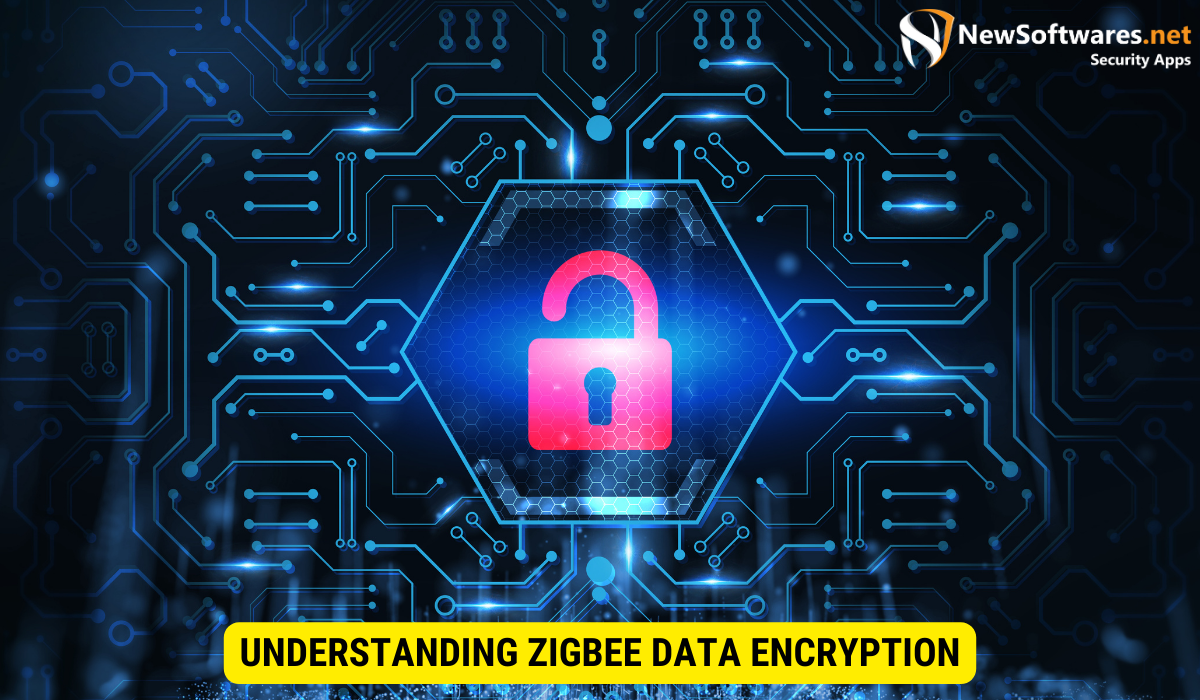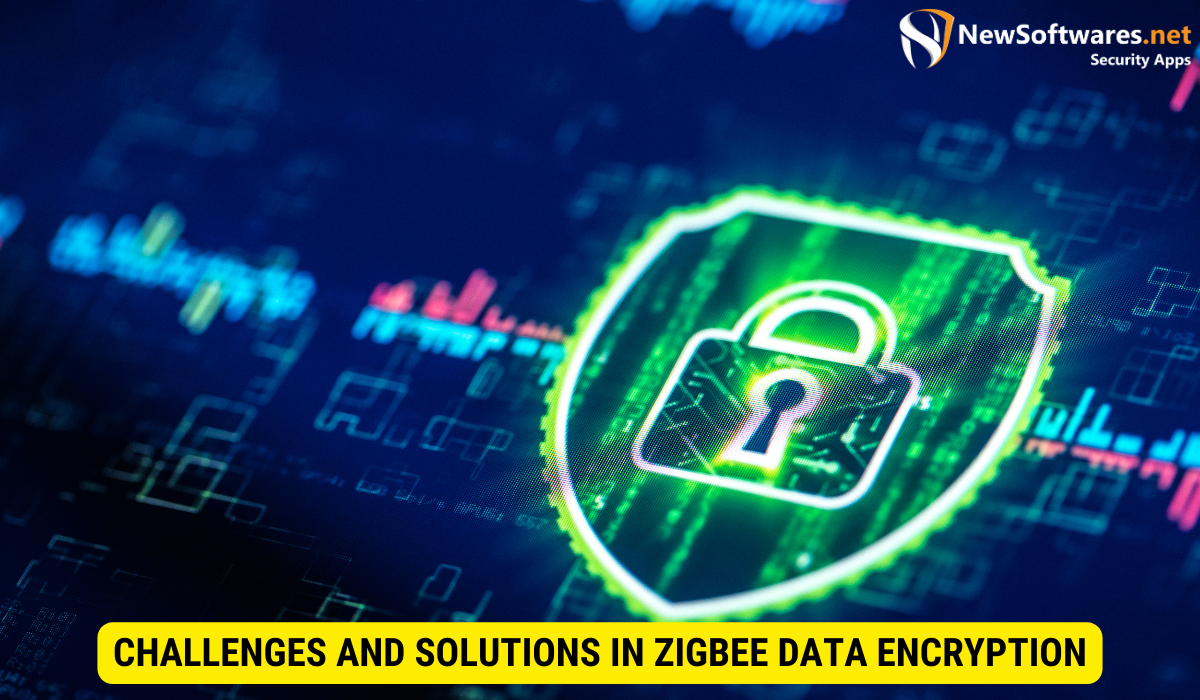ZigBee data encryption ensures secure transmission of data in wireless networks by using encryption keys and algorithms, with a security framework that includes encryption, authentication, and access control mechanisms.
In today’s interconnected world, the security of data transmission is of utmost importance. With the increasing use of wireless communication protocols, such as ZigBee, ensuring data encryption is crucial to protect sensitive information from unauthorized access. Together, we will demystify ZigBee data encryption and delve deep into how it works.
Understanding ZigBee Data Encryption

ZigBee is a low-power, wireless communication protocol that enables devices to communicate with each other in a network. It is widely used in various applications, from home automation to industrial control systems. One of the critical aspects of ZigBee is its robust system for data encryption, which ensures secure transmission of information.
The Basics of ZigBee Technology
Before diving into the details of ZigBee data encryption, it is essential to understand the basic principles of ZigBee technology. ZigBee operates in the 2.4 GHz frequency band and uses a mesh networking topology. This means that devices in a ZigBee network can communicate directly with each other or hop through intermediate devices to reach their destination. This mesh networking approach provides redundancy and resilience to the network.
Furthermore, ZigBee devices are designed to be low-power, which makes them ideal for battery-powered applications. They consume minimal energy, allowing them to operate without frequent battery replacements for extended periods. This energy efficiency is a key advantage of ZigBee technology, especially in applications where power consumption is critical.
The Importance of Data Encryption
The importance of data encryption cannot be overstated in today’s digital age. Data encryption ensures that data is protected during transmission and can only be accessed by allowed parties. In the case of ZigBee, data encryption is particularly crucial as it prevents unauthorized devices from intercepting or tampering with the data being transmitted. This is especially important in applications where sensitive information, such as personal or financial data, is transmitted.
With ZigBee’s data encryption mechanism, each device in the network has a unique encryption key. This key encrypts the data before transmission and decrypts it upon reception. This ensures that even if an unauthorized device manages to intercept the data, it won’t be able to decipher it without the encryption key. The encryption algorithm used in ZigBee is based on industry-standard cryptographic techniques, providing high security.
In addition to encryption, ZigBee also incorporates other security measures to shield the network and its devices. These comprise authentication which verifies the identity of devices prior to allowing them to join the network, and access control, which restricts the actions that devices can perform within the network. These security measures work together to create a robust and secure ZigBee network.
Overall, ZigBee’s data encryption is vital in ensuring the confidentiality and integrity of data transmitted within a ZigBee network. It provides peace of mind to users, knowing that their sensitive information is protected from unauthorized access. As ZigBee continues to be adopted in various industries, the importance of data encryption will only grow, making it an essential aspect of ZigBee technology.
The Mechanics of ZigBee Data Encryption
To understand how ZigBee data encryption works, let’s closely examine its key components and the encryption process itself.
Key Components in ZigBee Encryption
ZigBee data encryption relies on two main components: the encryption key and the encryption algorithm. The encryption key is a unique, secret value known only to the devices participating in the communication. It is used to both encrypt and decrypt the data. On the other hand, the encryption algorithm is the mathematical process used to transform the plaintext data into ciphertext and vice versa.
When it comes to the encryption key, it is crucial to ensure it is kept secure and not compromised. If an invader gains access to the encryption key, they can easily decrypt the ciphertext and obtain the original plaintext data. Therefore, it is essential to use strong encryption keys resistant to brute force attacks and other cryptographic attacks.
As for the encryption algorithm, ZigBee employs various algorithms, for instance Advanced Encryption Standard (AES), to ensure the confidentiality and integrity of the data. AES is a extensively used symmetric encryption algorithm which provides high security. It operates on fixed-size data blocks and uses a secret key to perform the encryption and decryption operations.
The Encryption Process Explained
The encryption process in ZigBee involves several steps. First, the plaintext data is divided into blocks, typically 128 bits in length. Each block is then encrypted using the encryption key and algorithm. The resulting ciphertext is then transmitted over the ZigBee network.
When transmitting the ciphertext, ZigBee employs various techniques to ensure the secure delivery of the data. These techniques include error detection and correction mechanisms, such as checksums and parity bits, to detect and correct errors during transmission. Additionally, ZigBee utilizes secure communication protocols to prevent unauthorized access and eavesdropping.
Upon receiving the ciphertext, the receiving device uses the same encryption key and algorithm to decrypt the data into plaintext. This process involves reversing the encryption steps, where each ciphertext block is decrypted using the encryption key and algorithm to obtain the original plaintext data.
It is worth noting that ZigBee data encryption provides a layer of security to the ZigBee network, protecting the data from unauthorized access and ensuring the privacy of the communication. By employing strong encryption keys and algorithms, ZigBee ensure that the data transmitted over the network remains confidential and secure.
ZigBee Encryption Standards
ZigBee follows a robust security framework to ensure data confidentiality, integrity, and authentication. Let’s explore the key aspects of Zigbee’s security framework and its compliance with global encryption standards.
ZigBee’s Security Framework
ZigBee’s security framework includes various mechanisms to protect the data being transmitted. These mechanisms include encryption, authentication, and access control. By combining these three elements, ZigBee ensures that only official devices can join the network and that the data transmitted among devices remains secure.
Encryption is a fundamental component of ZigBee’s security framework. It is the process of encoding data so only official parties can access and understand it. ZigBee uses advanced encryption algorithms to ensure the confidentiality of data. One of the encryption algorithms supported by ZigBee is AES-128, which stands for Advanced Encryption Standard, with a key size of 128 bits. AES-128 is widely recognized as a secure and efficient encryption algorithm, making it an ideal choice for ZigBee’s security framework.
Authentication is another crucial aspect of ZigBee’s security framework. It verifies the identity of devices attempting to join the network, ensuring that only trusted devices are granted access. ZigBee uses a combination of symmetric and asymmetric cryptographic techniques for authentication. This ensures that the devices are verified and protected against impersonation attacks.
Access control is the third pillar of ZigBee’s security framework. It regulates the permissions and privileges granted to devices within the network. ZigBee employs a hierarchical access control model, where devices are assigned different access levels based on their roles and responsibilities. This ensures that sensitive information is only reachable to authorized devices, minimizing the risk of unauthorized access or data breaches.
Compliance with Global Encryption Standards
ZigBee’s encryption standards comply with global industry standards, ensuring interoperability and compatibility with other systems. For example, ZigBee is built upon the IEEE 802.15.4 standard, which provides a robust foundation for secure data transmission. This standard specifies the physical and media entrance control layers for (low rate wireless personal area networks) (including ZigBee networks. By adhering to this widely accepted standard, ZigBee ensures its security framework is aligned with industry best practices.
In addition to the IEEE 802.15.4 standard, ZigBee supports various encryption algorithms recognized and recommended by global encryption standards organizations. These algorithms undergo precise testing and evaluation to ensure their security and effectiveness. By leveraging these established encryption algorithms, ZigBee provides a high level of confidence in the security of its networks.
Furthermore, ZigBee’s compliance with global encryption standards extends beyond the technical aspects. The ZigBee Alliance, responsible for developing and maintaining the ZigBee standard, actively collaborates with industry experts, government agencies, and other standardization bodies to ensure its security framework remains current and aligned with the evolving threat landscape. This commitment to continuous improvement and collaboration underscores ZigBee’s dedication to maintaining the highest security standards.
Advantages of Using ZigBee Data Encryption
There are several advantages to using ZigBee data encryption. Let’s explore some of the key profit it offers:
Enhanced Security Features
ZigBee data encryption provides enhanced security features to protect data during transmission. By encrypting the data, ZigBee ensures that even if someone intercepts it, they cannot understand it without the encryption key. This adds an extra layer of shield to sensitive information.
Scalability and Flexibility
ZigBee’s encryption mechanism is designed to be scalable and flexible. It can accommodate a large number of devices in a network while maintaining the security of data transmission. Additionally, ZigBee supports various encryption algorithms, allowing flexibility in choosing the most suitable algorithm for a particular application.
Challenges and Solutions in ZigBee Data Encryption

While ZigBee data encryption offers robust security, it has challenges. Let’s explore some common encryption issues and the solutions to overcome them.
Common Encryption Issues
One common encryption issue in ZigBee is key management. As devices join and leave the network, managing encryption keys becomes complex. Another challenge is the trade-off between security and performance. Strong encryption algorithms can consume significant computational resources, which may impact the performance of low-power devices.
Overcoming Encryption Challenges
To overcome encryption challenges, ZigBee relies on well-defined protocols and best practices. Key management protocols like the ZigBee Key Establishment Framework enable secure key exchange between devices. Additionally, ZigBee provides guidelines for selecting encryption algorithms based on the application’s security requirements.
Key Takeaways
- ZigBee data encryption ensures secure transmission of data in wireless networks.
- The encryption process in ZigBee involves the use of encryption keys and algorithms.
- ZigBee’s security framework includes encryption, authentication, and access control mechanisms.
- ZigBee complies with global encryption standards and supports various encryption algorithms.
- ZigBee data encryption offers enhanced security features and scalability.
FAQs:
Why is data encryption important in Zigbee networks?
Data encryption in ZigBee is crucial to protect sensitive information from unauthorized access during wireless transmission, ensuring the privacy and security of data.
What are the key components of ZigBee data encryption?
ZigBee data encryption relies on encryption keys and algorithms. The encryption key is unique to each device, and algorithms like AES are used for encryption and decryption.
How does ZigBee’s security framework enhance data security?
ZigBee’s security framework includes encryption, authentication, and access control mechanisms, working together to protect data and ensure only authorized devices can access the network.
Does ZigBee comply with global encryption standards?
Yes, ZigBee complies with global industry standards like IEEE 802.15.4 and supports recognized encryption algorithms. It actively collaborates with experts to maintain high-security standards.
What advantages does Zigbee data encryption offer?
Zigbee data encryption enhances security, provides scalability, and offers flexibility by supporting various encryption algorithms, making it suitable for various applications.
Conclusion
ZigBee data encryption plays a vital role in ensuring wireless communication security. By leveraging encryption keys and algorithms, ZigBee protects sensitive information from unauthorized access. With its compliance with global encryption standards and scalability, ZigBee data encryption offers enhanced security features without compromising performance. So, whether it’s home automation or industrial control systems, ZigBee data encryption provides the necessary security for a reliable and secure wireless network.
